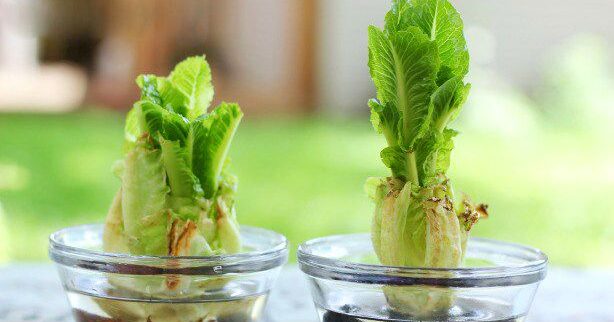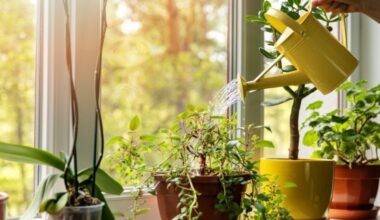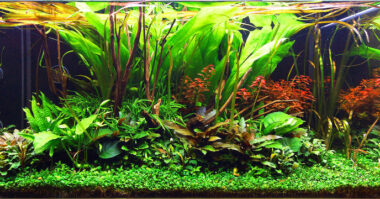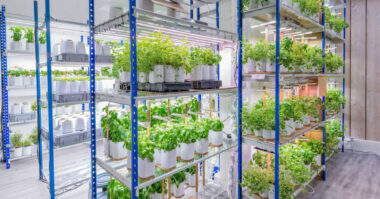Whether in a corner of your apartment, on your balcony or in your garden, you can grow vegetables without having to go out and buy seeds. Thanks to vegetative propagation, some plant species such as garlic, onions, fennel or leeks can reproduce only with remains or fragments of them.
Contents
How do vegetables grow without seeds?
The plant cells of some plants can alone reproduce a complete individual. This is vegetative propagation, a type of asexual reproduction that takes place from a plant organ such as the stem, bud or leaf.
Many species reproduce in this way. For example, duckweeds with their buds, strawberry plants with their long stems called stolons, or the fern with its rhizomes (underground stems), which elongate, branch and produce new leaves above ground. It is exactly the same concept for tubers like potatoes or tulip bulbs for example.
This technique allows to obtain new fruits and vegetables from a single plant: the mother plant. There are different types of vegetative propagation, of which the two best known are cuttings and layering. The mother plant takes root and evolves into a new identical plant, a clone.
How to grow vegetables from leftovers?
We know several types of multiplication, that we use a lot in the garden: the cutting and the layering, which are natural modes even if the gardener uses them commonly, and the graft, only of the hand of the man this one. Growing vegetables from food scraps is called cutting, a small piece of the vegetable in question gives birth to a new plant.
The goal here is not necessarily to obtain the whole plant, because that can be long, even very long, but to obtain at least a part of the plant which we usually consume. And that without needing to go to buy seeds, nor even often without soil!
Moreover, the vegetative propagation of vegetables can be reproduced endlessly, it takes little space and does not even require a balcony, and it is very fun and educational for children. It is the anti-waste, zero waste and particularly economical solution par excellence!
13 vegetables that grow without seeds
If you regularly use leeks, lettuce, carrots or spring onions, simply prepare a small bowl with water and a little potting soil. Discover a great way to get new vegetables from leftovers.
You’re one step closer to zero waste, and get fresh produce without fertilizers or pesticides. You’ll be surprised at the results!
1. Garlic
First, choose a head of garlic, not necessarily sprouted, and separate the cloves. Then plant them slightly apart in a pot or planter, with the pointed end up, 1 inch deep. Add potting soil on top and water once a week. Expose the pot to the sun.
Cut the stems when they are about 4 inches high, leaving 1 inch so they can grow back. Then when the stems start to dry out and turn brown, dig up the cloves: they will have turned into new heads of garlic.
You can then repeat the operation endlessly and start the vegetative propagation again.
2. Fennel
Fennel grows back easily from its remains.
To give it a second life, keep the heart of the bulb and place it in a little water in the sun. Wait a few days and you will see small shoots appear on the side of the bulb. These are new fennels that are growing.
3. Celery
Keep the core of the celery and place it in a bowl with a little water in the bottom. Put the bowl in the sun. Wait a few days and you will see small shoots and roots appear.
It is best to put the plant in the ground if you have a vegetable garden or to plant it in a larger pot. Water regularly and keep in the sun.
4. The onion
Within a week, you can grow a whole new white onion from another bulb!
Eat the top part of the onion and leave 1 inch of onion at the bottom, keeping the roots well.
Place this piece of bulb in a glass with a little water. In just a few days you will have new white onions.
You can also place the whole onion in the water if a sprout is present.
5. Shallots
Shallots are quick to regrow. In only 5 days, they find a second life.
To regrow them, place the bulb with the roots in a large bowl of water. Make sure the roots are pointing downwards. The next day, transfer your plant to the garden or to a large pot with soil.
6. Leek
Leeks also have a very fast vegetative propagation. With these techniques, you will only harvest the greens of the leek.
Keep the base of your leeks and immerse it in water, with the small filaments facing down. Change the water regularly and wash the roots once a week. When the leek matures, you will have beautiful green leaves that you can eat.
7. Ginger
The vegetative propagation of ginger is done by its root.
To regrow ginger, save a remnant of its root and plant it in a pot with potting soil. Keep the pot in a humid and shady environment.
Be very patient, ginger can take 8-10 months to regrow.
8. Lemongrass
Lemongrass grows back very quickly and requires little maintenance.
Place the remains of a branch in a glass of water. Then place the glass in a sunny spot. The plant will develop roots and when it reaches 12 inches, cut off what you need.
You can leave it in the water to grow back, or plant it in the ground.
9. Lettuce
Don’t throw away the core of your lettuce. The core is the basis for the vegetative propagation of the lettuce. By keeping the hard core of your lettuce, you can grow another one.
Remove most of the leaves from your lettuce and cut off the stalk to about 1 inch. Place the core in a bowl of water, half submerged, and in a sunny spot.
Wait a few days, adding water if you notice the level dropping.
After about 15 days, you will see roots and new leaves appear, which you can eat. If you change the water regularly, your salad will continue to grow.
But, you can also replant your lettuce in a pot with soil by removing the dead leaves. Repeat the process as many times as necessary.
10. Chinese cabbage
Chinese cabbage grows back in the same way as lettuce.
It is through its heart that vegetative reproduction is ensured.
Place the heart of the Chinese cabbage in a bowl with a little water, at the edge of a window in the light. Change the water regularly and wait for the leaves to grow back.
11. Potatoes and sweet potatoes
Besides being able to recycle potato peels for cooking, you can also regrow them from a piece or sprout.
Take a piece of potato and clean it well. Insert a toothpick in each side, to keep part of it out of the water. Then place it in the water. The roots will grow in the water and the leaves will grow on top.
Dry the potato piece well and plant it in your garden or in a potato tower, if you have a small space.
12. Carrot, beet and turnip tops
Everything in the carrot can be eaten. The peelings can be used to make potato chips, and the tops can be eaten as a salad. Carrot tops are also used for vegetative propagation. You can grow tops all year round, starting from the top of the carrot.
Save the tops of the carrots and place them in a container with a bottom of water. Expose it to the sun and change the water regularly to prevent it from getting moldy. After a few days, new tops will start to emerge. You can choose to put them in the ground, with their new roots, or keep them in water (changing the water regularly).
Beet and turnip tops grow back in the same way.
13. Basil and cilantro
Don’t throw away your basil or cilantro bouquet anymore, but use their stems to regrow them in your kitchen.
Save the large stems, at least 4 inches long, and put them in a glass filled with water. Change the water every 2 days. Expose it to the sun to promote regrowth. When the roots measure 1 inch, you can plant in a pot with soil.









